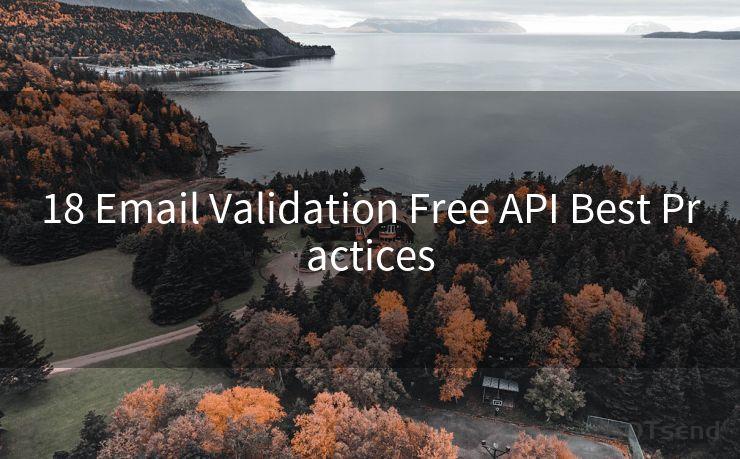18 Email Validation Free API Best Practices




Introduction
In the digital age, email communication has become an integral part of our daily lives. Whether it's for personal or business use, ensuring that email addresses are valid is crucial for effective communication. This is where email validation APIs come into play. In this article, we'll explore the best practices for using free email validation APIs, focusing on their integration and utilization for maximum efficiency.
1. Understanding Email Validation APIs
Email validation APIs are tools that allow users to verify the validity of email addresses. These APIs check for syntax errors, domain validity, and even whether the email address actually exists. By integrating these APIs into your applications or systems, you can significantly reduce the number of bounced emails and improve the overall quality of your email list.
2. Choosing the Right API
When selecting a free email validation API, it's essential to consider several factors. Look for APIs that offer high accuracy, reliable performance, and a generous free tier. Additionally, check for APIs that provide detailed documentation and support, as this will make integration smoother.
3. Integrating the API
Integrating a free email validation API into your system is relatively straightforward. Most APIs provide clear documentation on how to make requests and handle responses. Typically, this involves sending an HTTP request to the API endpoint with the email address you want to validate. The API then returns a response indicating whether the email is valid or not.
4. Optimizing API Usage
To maximize the efficiency of your email validation process, follow these tips:
- Batch processing: If you have a large list of emails to validate, use batch processing to send multiple email addresses in a single API request. This reduces the number of requests made and speeds up the validation process.
- Caching: Implement caching mechanisms to store previously validated email addresses. This way, you can avoid redundant API calls for emails that have already been validated.
- Error handling: Ensure your code gracefully handles API errors or failures. Implement retry mechanisms and fallback options to ensure the reliability of your email validation process.
5. Complying with Privacy and Security Standards
When handling email addresses, it's crucial to comply with privacy and security standards. Make sure your chosen API follows best practices for data encryption and secure storage. Additionally, be transparent about how you collect and use email addresses to build trust with your users.
Conclusion
🔔🔔🔔
【AOTsend Email API】:AOTsend is a Managed Email Service for sending transactional emails. Support Email Types: reminders, authentication, confirmations, notifications, verification codes, invoices, password resets, account activations, billing statements, two-factor authentication (2FA), and one-time passwords (OTP) emails, etc. $0.28 per 1000 Emails. 99% Delivery, 98% Inbox Rate.
You might be interested in:
Why did we start the AOTsend project, Brand Story?
What is a Managed Email API, How it Works?
Best 25+ Email Marketing Platforms (Authority,Keywords&Traffic Comparison)
Best 24+ Email Marketing Service (Price, Pros&Cons Comparison)
Email APIs vs SMTP: How they Works, Any Difference?
Utilizing free email validation APIs can significantly improve the quality of your email list and enhance communication efficiency. By following the best practices outlined in this article, you can ensure smooth integration, optimize API usage, and maintain compliance with privacy and security standards. Remember, choosing the right API and implementing robust error handling mechanisms are key to a successful email validation strategy.





Scan the QR code to access on your mobile device.
Copyright notice: This article is published by AotSend. Reproduction requires attribution.
Article Link:https://www.mailwot.com/p3275.html



